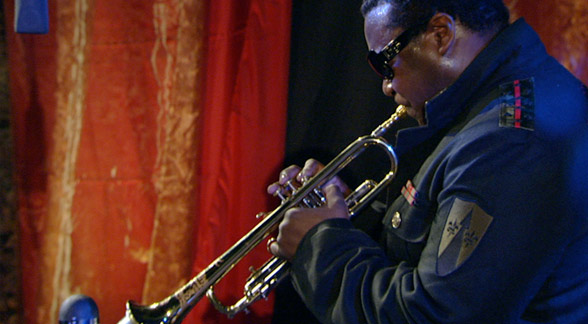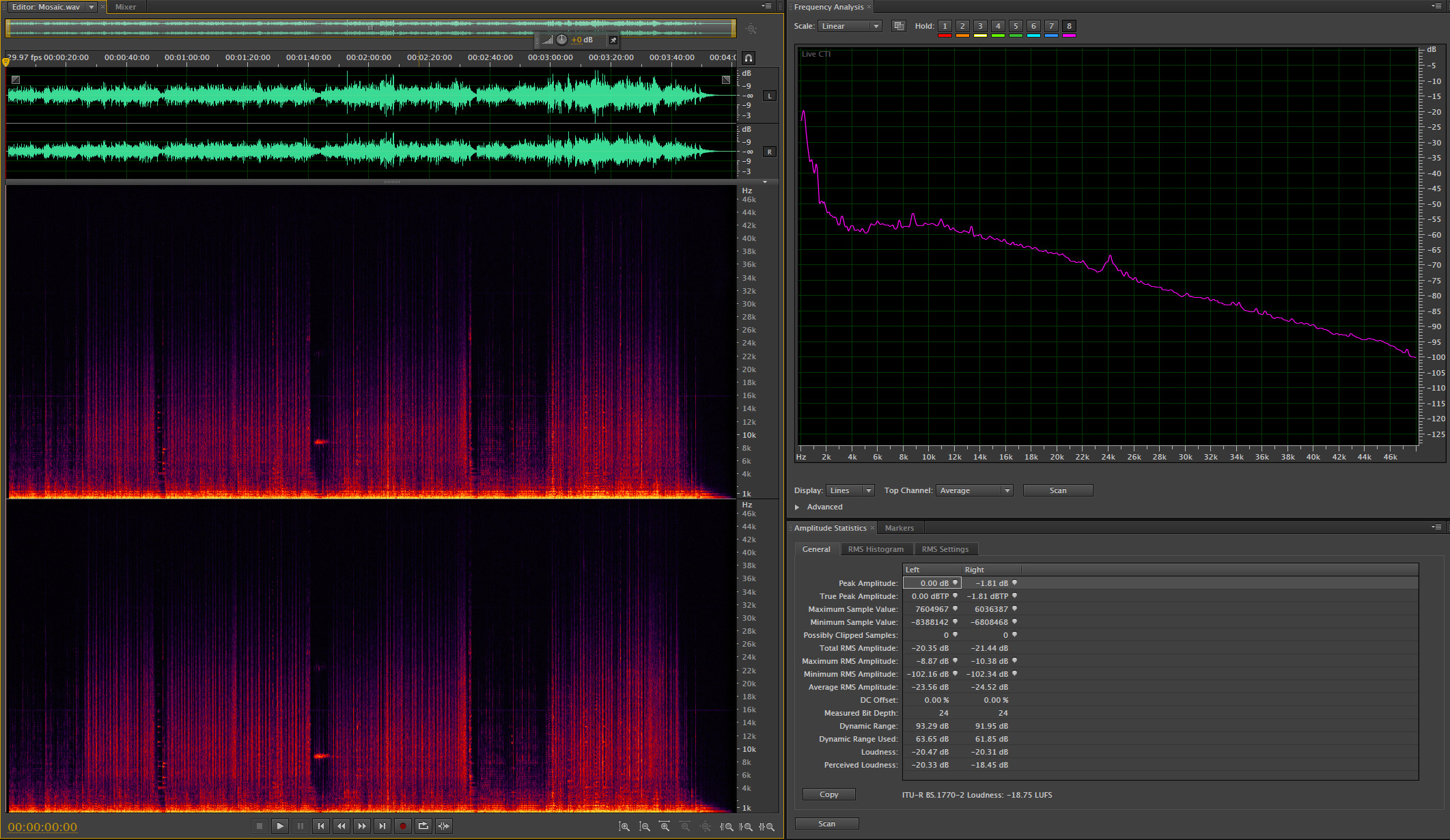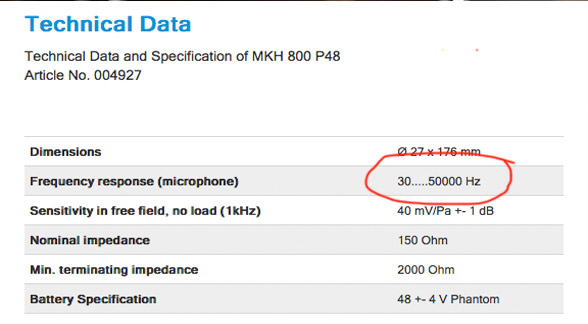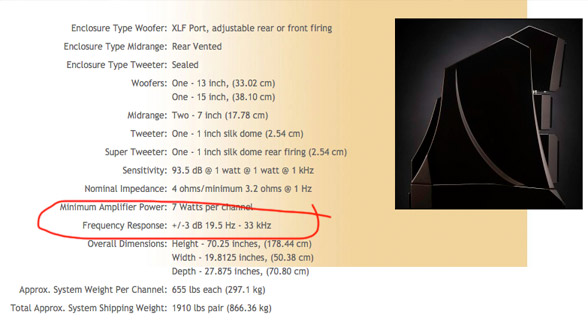Ultrasonics: Believe It Or Not?
I purchased a book on audio a few days ago on Amazon and it arrived yesterday. It’s a hefty paperback that covers a lot of the subject area from a realistic and practical point of view. In the introduction, the author states, “People…believe that ultra-high digital sample rates are necessary even though nobody can hear or be influenced by ultrasonic frequencies.” While I generally am equally skeptical about some of the claims made by equipment manufacturers in the high-end audio world, this statement bears some discussion.
People…believe that ultra-high digital sample rates are necessary even though nobody can hear or be influenced by ultrasonic frequencies.
First, let’s define what we mean by ultrasonics. The traditional range of human hearing is 20 to 20 kHz. This range varies widely over our lifetimes but is a pretty good measure and it well represented by the various formats we have for capturing and delivering music. Both analog and digital formats are able to record and reproduce the entire frequency range of human hearing. An ultrasonic frequency would be any frequency higher than 20 kHz. Recording and playing back frequencies higher than 20 kHz is a challenge. It can be done but is it worth the added trouble and expense?
There is a rather obvious preliminary question that needs to be answered before we start to consider the technical challenges of recording and playback ultrasonic frequencies. Are there any of these ultrasonic sounds produced by instruments? And the answer is a definite yes. It’s true that the move from 20 kHz to 40 kHz is only an additional octave (musical octaves happen when you double the frequency). But it turns out there is a lot of information up there coming from cymbals, guitars, trumpets and most of the members of the orchestra. Here’s a spectragraph of Laurence Juber’s acoustic guitar, percussion and acoustic bass trio. Notice the amount of purple color that is higher than 20 kHz. There is no question about musical sounds existing in the ultrasonic range.
There is no question about musical sounds existing in the ultrasonic range.
The final question and perhaps the most important is can humans “hear or be influenced” by ultrasonic frequencies. There is plenty of anecdotal information regarding ultrasonics and humans but is there any scientific research on the topic.
Figure 1. A spectragraph showing lots of ultrasonic information. Click on the image to view an enlarged version.
Next, we have to think about the production process. Do audio engineers have hardware and recording systems necessary to capture ultrasonics? Again the answer is yes. I have a pretty good collection of microphones and can attest to the fact that many of them have frequency ranges that exceed 20 kHz. Sennheiser, Schoeps, Neumann and others design and manufacture microphones that reach up to 50 kHz. They are specifically designed to accommodate the newer HD-Audio recording systems. Here’s the specifications for the new Sennheiser MKH 800.
Figure 2. The specifications for a Sennheiser MKH 800 microphone showing extension to ultrasonic response.
So far so good. And we know that with HD-Audio recording systems like 96 kHz/24-bit PCM machines we can comfortably capture ultrasonics. DSD 64 recordings have a great deal of out of band noise that requires a low pass filter above 22 kHz (according to Mikael Vest in his Resolution magazine article) but DSD 128 and DXD (PCM at 352.8 and 24-bits) can reach ultrasonic frequencies.
How about the rest of the playback chain. Can analog electronics, amplifiers and speakers deliver these “inaudible frequencies”? Once again, the answer is yes. Studio equipment is routinely good to 100 kHz and high-end speakers with good tweeters or even “super tweeters” can reach 40 Khz and beyond. Even headphones can deliver ultrasonics. Here’s the specs for the top of the line Wilson speakers…the Alexandria XLF.
Figure 3. The specifications for Wilson Alexandria XLF speakers with frequency response above 20 kHz.
A simple Google search turns up a number of links the purport to show the ability of humans to be at least “influenced” but ultrasonic frequencies or “hypersonic” hearing as one researcher put it. Here’s the references from a Wikipedia article on topic.
- Nishimura, T.; Nakagawa, S.,Sakaguchi, T. (January 2003). “Ultrasonic masker clarifies ultrasonic perception in man”. Hearing Research 175 (1–2): 171–177. doi:10.1016/S0378-5955(02)00735-9. PMID 12527135.
- Lenhardt, M. (2003). “Ultrasonic hearing in humans: applications for tinnitus treatment”. Int. Tinnitus J. 9 (2): 69–75. PMID 15106276.
- T. Oohashi, E. Nishina, M. Honda, Y. Yonekura, Y. Fuwamoto, N. Kawai, T. Maekawa, S. Nakamura, H. Fukuyama, and H. Shibasaki. Inaudible high-frequency sounds affect brain activity: Hypersonic effect. Journal of Neurophysiology, 83(6):3548–3558, 2000.
- Deatherage, B.; Jeffress, L., Blodgett, H. (1954). “A Note on the Audibility of Intense Ultrasonic Sound”. J. Acoust. Soc. Am. 26 (582): 582. Bibcode:1954ASAJ…26..582D. doi:10.1121/1.1907379.
If we’ve got mikes, consoles, amplifiers, speakers that can handle ultrasonics AND music contains those frequencies AND we have cost effective consumer platform that can delivery them…then why shouldn’t we?
There is at least the possibility that ultrasonic frequencies influence our perception of reproduced sound. However, my position doesn’t rely on the firm establishment by means of scientific investigation. It’s about the integrity of the whole signal path…from musician to consumer. If Laurence Juber and his musicians are producing frequencies in the ultrasonic range, I feel obligated to capture them, to maintain them through the post production process and deliver them on the products that we release. After all, isn’t this the truest meaning of the word fidelity? I don’t really care if the traditional range of human hearing only reaches 20 kHz. If we’ve got mikes, consoles, amplifiers, speakers that can handle ultrasonics AND music contains those frequencies AND we have cost effective consumer platform that can delivery them…then why shouldn’t we?





I think it’s funny that people don’t think it’s worth it to have the highest possible sample rates…don’t we want to record as much as possible?
I recently inserted a pair of Fostex planar ribbon super tweeters (extended range to 33kHz) into my home system and the difference was immediate and remarkable. I have been binge listening ever since, discovering nuances in my music collection heretofore undiscovered.
And yes, my Marantz amplifier is rated 10Hz – 100kHz (+/- 3 dB)
It’s sound like you’ve added a new dimension to your setup. Can you tell share what software you’re playing that brings new level of enjoyment with the super tweeters?
Even my Pioneer A-9 (’81 vintage) has a listed (marketed?) frequency response of 5Hz – 200kHz (+0dB/-3dB) for all inputs other than the RIAA equalised Phono input (20Hz-20kHz). It seems there’s hope for me yet.
As an aside, I stayed clear of digital formats mainly due to not knowing where to find a single source of truth (maybe I’ve found it here?) for what is good, what is bad and what is snake oil; and an absolute distaste of MP3.
What I’d like to do is find out how to play the HD files that came with all the Led Zeppelin remasters that sit idle on a hard drive somewhere.
Even my Pioneer A-9 (’81 vintage) has a listed (marketed?) frequency response of 5Hz – 200kHz (+0dB/-3dB) for all inputs other than the RIAA equalised Phono input (20Hz-20kHz). It seems there’s hope for me yet.
As an aside, I stayed clear of digital formats mainly due to not knowing where to find a single source of truth (maybe I’ve found it here?) for what is good, what is bad and what is snake oil; and an absolute distaste of MP3.
What I’d like to do is find out how to play the HD files that came with all the Led Zeppelin remasters that sit idle on a hard drive somewhere.